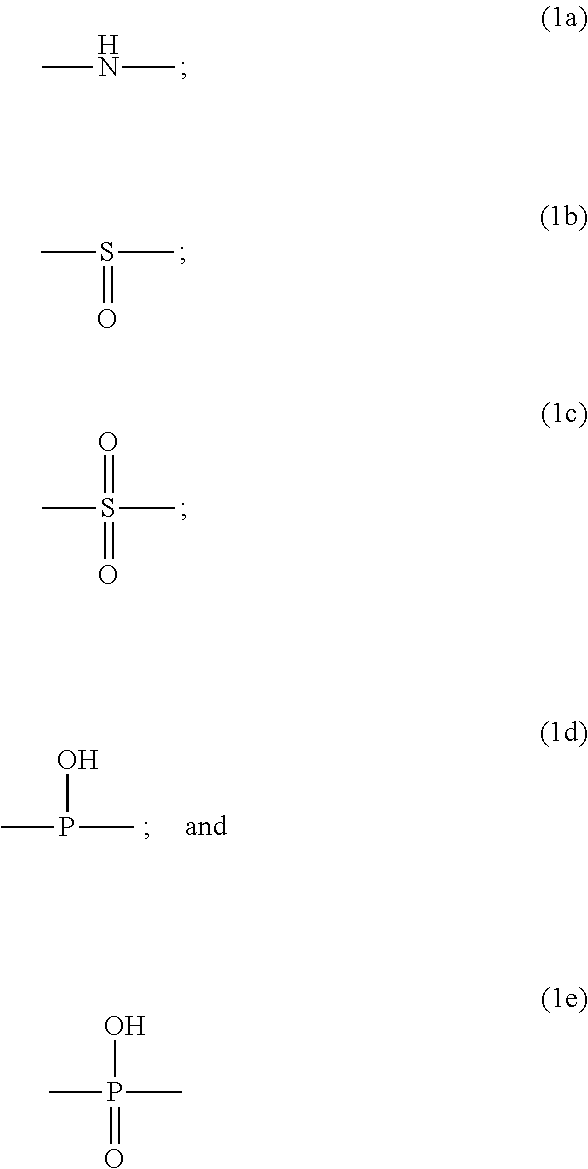Version of FDG Detectable by Single-Photon Emission Computed Tomography
a computed tomography and single-photon emission technology, applied in the direction of radiation measurement, optical radiation measurement, spectral modifiers, etc., can solve the problems of pet being one of the more costly imaging procedures, not having the sensitivity required to detect fdg, and accumulates and remains, etc., to achieve convenient kit provision and limited shelf life
- Summary
- Abstract
- Description
- Claims
- Application Information
AI Technical Summary
Benefits of technology
Problems solved by technology
Method used
Image
Examples
example 1
[0098]Preparation of the metallopharmaceutical compound DOTA 6-aminoglucose of formula (11):
[0099]DO3A-tris(tert-butyl) ester (A) is alkylated with benzyl 2-(2-bromoacetamido)ethylcarbamate (B) in acetontrile and sodium bicarbonate. The carbenzoxy group is removed by hydrogenolysis and the resulting free amine (D) is alkylated by 6-tosyl-2,3,4,5-tetra-O-acetyl glucose (E). The glucose conjugate, (F), may be deprotected sequentially via saponification and treatment with trifluoroacetic acid to give the free chelator (11), probably as the TFA-salt.
example 2
[0100]Preparation of the metallopharmaceutical compound iminodiacetic acid 6-aminoglucose of formula (12):
[0101]Tert-butyl 2,2′-(2-aminoethylazanediyl)diacetate (A) is treated with 6-tosyl-2,3,4,5-tetra-O-acetyl glucose (B) under dilute conditions with an organic base such as triethylamine. The product (C) may be isolated via preparative chromatography and deprotected sequentially via saponification and treatment with trifluoroacetic acid to give the free chelator (12), probably as the TFA-salt.
example 3
[0102]Preparation of the metallopharmaceutical compound DTPA-6-aminoglucose of formula (13):
[0103]Mono(carbobenzoxy)ethylenediamine (A) may be mono-alkylated with 6-tosyl-2,3,4,5-tetra-O-acetyl glucose (B) under dilute conditions with an organic base such as triethylamine. Following hydrogenolysis, to unmask the primary amine (D), and acetylation with an excess of DTPA-bis(anhydride) (E), to give the mono-acylate (F), the protected intermediate may be purified by reverse phase chromatography. Finally, saponification with sodium hydroxide and aqueous methanol, will provide the free glucosamine-DTPA (13).
PUM
| Property | Measurement | Unit |
|---|---|---|
| computed tomography | aaaaa | aaaaa |
| magnetic resonance spectroscopy | aaaaa | aaaaa |
| magnetic resonance imaging | aaaaa | aaaaa |
Abstract
Description
Claims
Application Information
 Login to View More
Login to View More - R&D
- Intellectual Property
- Life Sciences
- Materials
- Tech Scout
- Unparalleled Data Quality
- Higher Quality Content
- 60% Fewer Hallucinations
Browse by: Latest US Patents, China's latest patents, Technical Efficacy Thesaurus, Application Domain, Technology Topic, Popular Technical Reports.
© 2025 PatSnap. All rights reserved.Legal|Privacy policy|Modern Slavery Act Transparency Statement|Sitemap|About US| Contact US: help@patsnap.com



